The United Kingdom’s golf résumé will garner significant attention in the next few golf seasons with Celtic Manor hosting the 2010 Ryder Cup and Turnberry gearing up for the 2009 Open Championship. If ever there was a time to make the pilgrimage, that time has come.
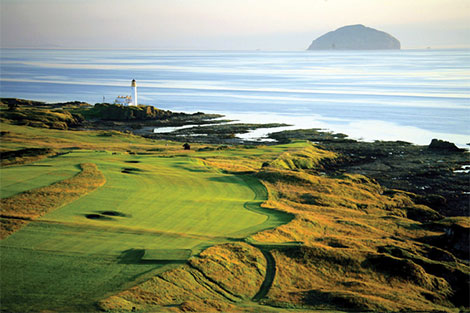
Standing on the tee box of the 187-yard, par-3 sixth hole of Turnberry’s Ailsa Course, my caddie, Stephen Gray, removed the least-lofted club in my bag. Typically 187 yards from the regular tees, a forward pin position had the distance around 165 yards this particular day.
"A driver?” I questioned, peering at him from under the brim of my hat.
“Welcome to Scotland,” he said, his charming Scottish accent emerging from a sly grin as he turned the butt end of the club toward me. Granted, the wind had intensified, so I decided to humor him. Unknowingly, the joke was on me.
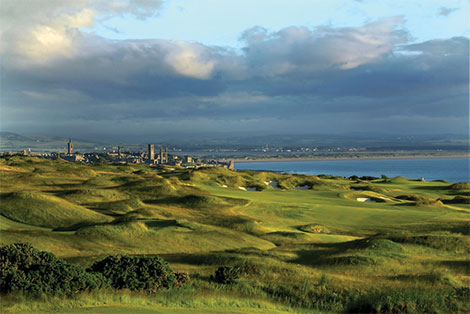
Holding my finish for what seemed an eternity, we watched as the prevailing winds hoisted my drive into the atmosphere, landing it upon a greenside mound short of the pin. And so, the recurring scenario of the trip was born. If the old Scottish adage is true—“nay wind, nay rain, nay golf”—then golf experiences sans the climatic elements present on the coastal courses of Britain aren’t of the purest form.
Purity reigns supreme at Turnberry, where the charm of Turnberry Lighthouse and the enormity of the distant Ailsa Craig (an island of granite once mined for curling stones) harness a unique ambiguity; most certainly the framework for what golf fantasies are made of. The majestic course itself serves as the most blissful of distractions for golfers trekking its 7,211 yards.
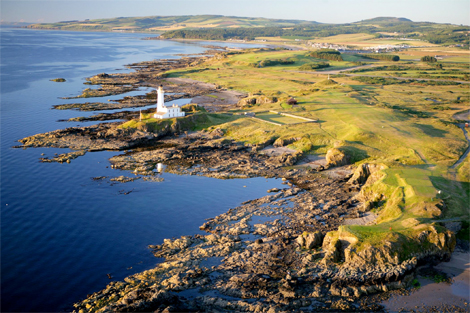
The greatest in the game have long championed Turnberry’s place among the world’s elite, and with just cause. Home to three previous Open Championships, the venue will once again assume this familiar role for the 2009 Open Championship.
It’s hard to imagine that the historic red-tile roofs that contain Turnberry’s spirit could use some sprucing. However, Leisurecorp, the Dubai World investment company that recently acquired the Turnberry Resort through a £55 million transaction, is halfway through a £30 million refurbishment of the legendary property ahead of the Open Championship in July.
While Turnberry is under renovation, golfers searching for a place to nest between tee times in the Troon/Ayrshire vicinity can explore another option in the form of historic exclusive-use venues like Hillhouse. A 10-bedroom Georgian country manor, Hillhouse boasts Ritz-Carlton-caliber touches whilst harnessing privacy and affording the leisure to roam about the entire property as if it were your own. The nearby town of Ayrshire provides an array of dining and entertainment. Stop by the Wheatsheaf Inn for true Scottish cuisine with meat pies and haggis done right.
On the opposite side of the country (which only takes two hours to drive to), is the birthplace of golf and the storybook setting known as the town of St. Andrews. For those who haven’t been, it is not quite the enchanting, charismatic and idyllic golf funhouse others make it out to be. It’s that, times a thousand.
Unequivocally dissimilar to any sense I can relate about various golf experiences I’ve had, St. Andrews evokes an oxygen-depleting sigh that wrings golfers’ lungs of the preconceived notions as to what “it” will be like. The next, effortful attempt to expand the diaphragm typically results in a sensation that can only be attributed to what I like to call “the St. Andrews effect”—an eye-widening, brow-raising phenomenon that induces a satisfactory smirk.
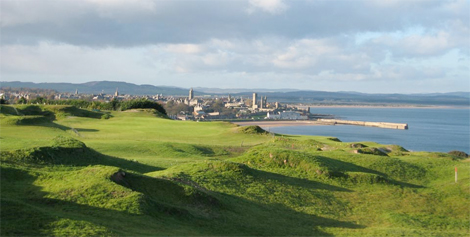
Donning two pairs of pants and approximately five layers on top, we prepared that next breezy October day to play the newest layout on the block, The Castle Course. David McLay Kidd’s transformation of unexciting potato farms into a links-style layout equipped with a sprinkling of blind tee shots, fairways guarded by rugged mounds and magnificent views of the North Sea, are aspects not to be missed. Though brutal if you find yourself out of the fairway, The Castle Course remains a fair test if kept within the short stuff.
As the temperature rose and layers were stripped off, we found ourselves at the home stretch. Mike Woodcock, communications manager for the St. Andrews Links Trust, informed us of the acquisition of additional farmland in order to establish what are now the 16th green and 17th tee of the course. “David McLay Kidd spoke to the Trust about purchasing the land because he saw the potential for creating the 17th hole,” Woodcock says. “It is a spectacular par 3, which plays over a chasm in the cliffs to an undulating green.” This corner of the course has been likened to that of Pebble Beach.
Welsh Wonderland
Wales, though not well-known for its course repertoire, boasts an impressive inventory of exceptional clubs and royal designations. Perhaps the region’s most prominent appeal is its upcoming role as host to the 2010 Ryder Cup. The event will transpire in Newport, South Wales at Celtic Manor on the aptly named Twenty Ten course.
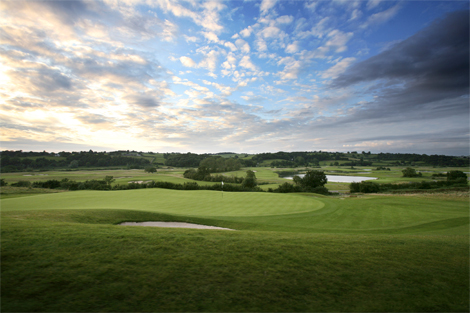
Built specifically for the Ryder Cup matches, players and fans will enjoy prime vantages from viewing hills designed for gallery gathering and a setting in the whimsical landscape of the Usk Valley. Manicured more similarly to American courses than the barren, tree- less courses one might imagine that hemisphere of the world to comprise, The Twenty Ten course requires finesse around tough corners and confidence coupled with distance control for approach shots to several water-guarded green complexes. The crafty 7,493-yard layout and its inclusion of one of the neatest downhill par-5 finishers in tournament golf will certainly supply enough drama to stage a compelling Ryder Cup.
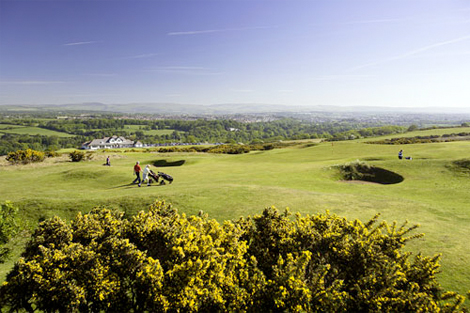
Westward and slightly north up the coast sits Southerndown Golf Club, a grass-roots establishment in Bridgend overlooking the Bristol Channel. Perhaps the club’s most notable element is its ability to parlay a truly experiential round of golf, beginning with a large board just off the entrance that dictates the daily tee sheet. Howling wind patterns in the late summer to early autumn timeframe, while testing, add to the ambience of the club and relay the genuine truth of what a United Kingdom course would be expected to embrace. Views of the sea from the 6,449-yard course and a traditional clubhouse remain reminiscent of the club’s establishment in 1905. Gorse bushes throughout the course whisper what golf high above the limestone dunes must have been like more than a century ago. Occupying 230 acres of Ogmore Down Common, an estimated 700 sheep roam the course at Southerndown, overseeing their home territory and kindly sharing it with members and visiting pin seekers.
As blustery as the wind patterns at Southerdown can be, they don’t hold a candle to the sheer velocity at Royal Porthcawl Golf Club. Distinguished by a “royal” designation and a location directly on the Bristol Channel, I appreciate Royal Porthcawl for far more than the 6,870 yards it stretches. Late in the day, as our round got underway, a choppy sea ensued as high tide rolled in. The wind had been blast- ing at a continuous 40-mph rate, the kind of gusts that force men to chase their hats down the fairway as walking trolleys and golf bags spill left and right.
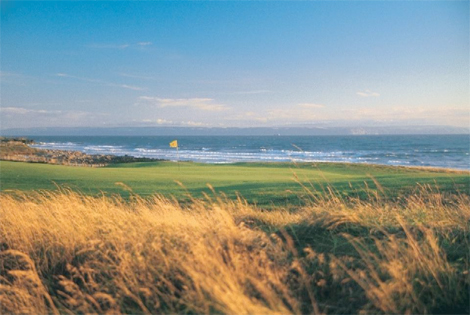
It was on the 116-yard par-3 seventh that we encountered a sturdy crosswind. The conditions commanded a stinger-type shot aimed far right of the green with a hopeful reliance that the wind would bring it back. And did it ever. Following a few bounces, my trusty Titleist rolled right into the cup.
As Great Britain prepares to host two of what will undoubtedly become historically significant events, there has never been a better time to make the journey. The decision to do so would be nothing short of an ace.